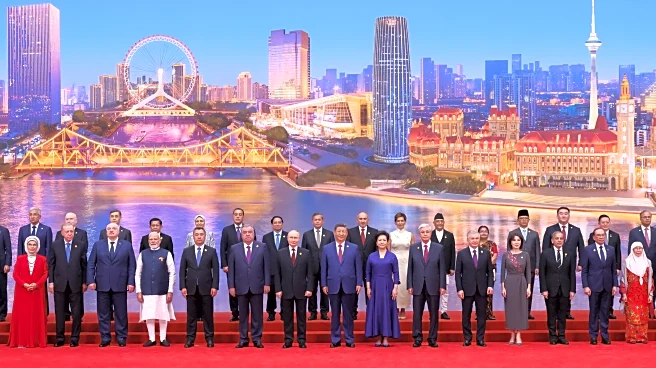What is the story about?
What's Happening?
The global Dimethylformamide (DMF) market is experiencing steady growth, with industry valuations reaching USD 143.6 million in 2024. The market is projected to grow at a compound annual growth rate (CAGR) of 6.4%, potentially reaching USD 248.7 million by 2032. This growth is driven by strong demand in polyurethane production and expanding pharmaceutical applications, particularly in Asia-Pacific, which commands over 45% of global consumption. China remains the largest producer and consumer, benefiting from integrated petrochemical complexes. India and Southeast Asia are emerging as significant growth markets due to expanding pharmaceutical API production capacities and electronics manufacturing facilities.
Why It's Important?
The expansion of the DMF market is significant for several industries, including pharmaceuticals, electronics, and chemical processing. The demand for high-purity solvents in the pharmaceutical sector offers premium opportunities, with API production expected to maintain 7-9% annual growth through 2030. Additionally, DMF's role in energy storage systems, particularly in advanced battery technologies, presents a significant growth frontier. However, environmental and regulatory challenges, such as classification under REACH, pose ongoing hurdles for producers. The concentration of production capacity in Asia introduces supply chain vulnerabilities, influenced by geopolitical tensions and trade policy changes.
What's Next?
The DMF market is expected to continue its growth trajectory, driven by the expansion of the polyurethane industry and pharmaceutical sector. Emerging opportunities in energy storage systems and bio-based DMF development align with sustainability trends. However, manufacturers must navigate regulatory pressures and supply chain vulnerabilities. Investment in containment systems and personal protective equipment will be necessary to meet tightening workplace exposure limits globally.
Beyond the Headlines
The DMF market's growth reflects broader trends in the chemical industry, including the push for sustainability and innovation in solvent recovery systems. The development of low-VOC formulations and bio-based DMF aligns with environmental goals, while geopolitical tensions and trade policy changes highlight the need for strategic planning in production and distribution.
AI Generated Content
Do you find this article useful?
















